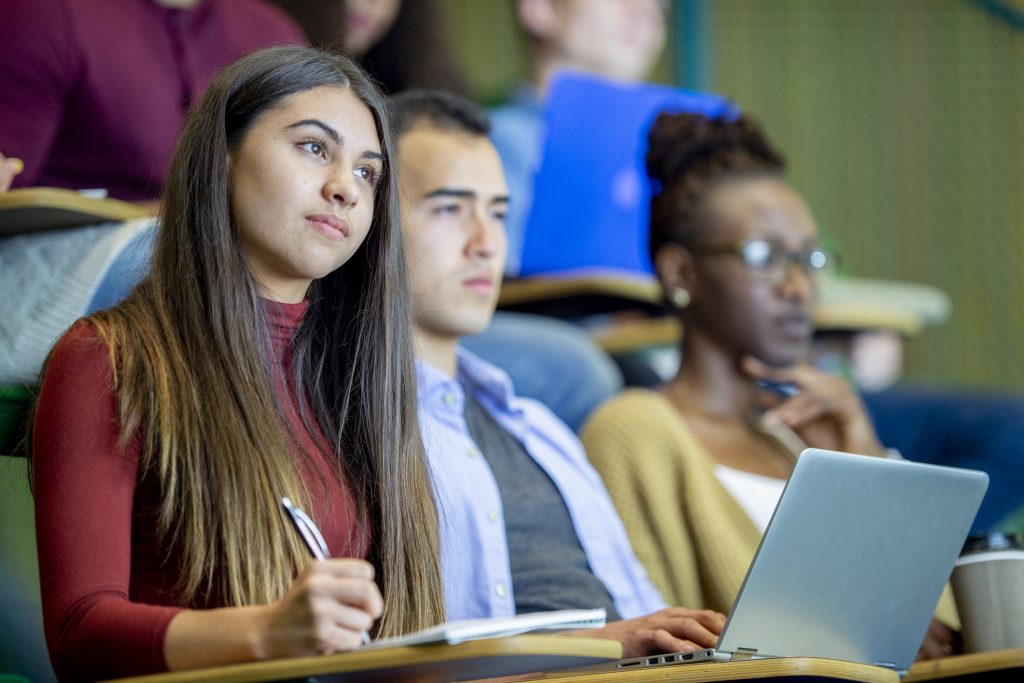
In March 2020, educators across the globe faced a monumental challenge—transitioning in-person classes to an online venue virtually overnight.
While rushed and imperfect, tools like Learning Management Systems, video conferencing technology, and social media helped to preserve the interactive and engaging atmosphere of an in-person experiential education that is vital for students.
Fast forward two years and the hybrid model of online and in-person learning has forever changed education for teachers and students. These changes will likely persist well after the pandemic.
One study showed that 58% of educators have a more positive view of technology playing a key role in the classroom since the onset of the pandemic. While another study projects that the global education technology market will see a 20% compound annual growth rate going forward—from $86 billion in 2020 to an estimated $379 billion by 2028.
Educators and businesses are all in on implementing technological innovations to make classrooms and learning experiences across the globe more accessible, engaging, and equitable. If COVID normalized virtual and remote learning, what else could be on the horizon in the next several years? Let’s take a look!
Gamification
The modern classroom is taking one of our favourite forms of entertainment and adapting it for learning. Games have always been an immersive experience, putting players in life-like scenarios while asking them to problem-solve creatively. Gamification involves applying game-like mechanics to classroom learning objectives to encourage engagement.
Examples of gamification include a point system to meet learning objectives, setting up a goal that, when hit, would unlock a special reward, or designing group projects as team missions to teach skills like collaboration and delegation. The goal/reward system engages the learner, and the inevitable dopamine rush of accomplishing a goal helps the learner retain information.
Augmented and Virtual Reality
Remember being in high school chemistry class, listening to your teacher give an in-depth lecture on the process of covalent bonds between molecules, but the only thing you could focus on was what you were going to have for lunch that day?
But what if you could see a rendering of this chemical process in action? Almost as if it was happening in front of you through a virtual reality headset? You would probably put your lunch plans on hold.
That is one of the exciting possibilities augmented reality (AR) and virtual reality (VR) hold for the future of experiential education—giving hands-on learning a whole new definition.
AR tech brings the curriculum to life and provides a multisensory experience to students. It is hands-on and boosts information retention. Some prominent examples of AR in education include the SkyView app, which allows students to point their phones to the night sky to view an AR overlay of visible constellations, planets, and other celestial objects.
Virtual tours are also becoming more common among museums, allowing students to attend immersive, engaging field trips without ever leaving their homes. With advances in 3D scanning technology, medical students could learn anatomy in the classroom via detailed virtual, interactive models instead of renderings in textbooks or plastic models.
Virtual reality learning can be beneficial in areas that would be too cost-prohibitive or impractical to carry out the activity in the real world. For example, a community college in Vancouver is using VR welding technology that allows students to begin practicing their automotive skills in a safe environment. Using a controller and an Occulus headset, these students are welding metal in a virtual environment free of fumes and burn hazards. And once the students are comfortable in this virtual environment, they can transition to a real-life shop training environment.
These experiences put the learner in scenarios they would come across while on the job and helps them live out the learning objectives of a course. With Google and Amazon constantly investing in VR tech, it is becoming more and more viable to bring this experience to the classroom.
Artificial Intelligence (AI)
AI is one of the newest trends in tech and has the potential for a wide variety of functions and systems in the education system, such as grading, student information services, library services, and proctoring, to name a few. Some programs have developed virtual coaches to support learners in meeting their academic goals while keeping them updated on their learning progress. For instance, students learning to speak English could use a chatbot program to practice their conversational English skills in a safe, non-judgmental environment. Language Chatsim, a VR and AI-based language tool is one example of this type of AI-enabled experiential learning.
AI is also being used by educational administrators while designing programs to decide learning objectives. One software, PrepAI, extracts test questions from a word doc or pdf an instructor uploads. Within minutes, it creates multiple tests with the same difficulty level for the same set of students. Eliminating administrative and technical aspects of an instructor’s role allows them to focus more on pedagogy and offering support to learners.
Another interesting use of AI is to tailor lessons depending on a student’s learning inclinations. Software that can analyze transcripts of live classes can help educators pinpoint data that can improve their lessons and help students learn at their own pace. On an institutional level, big data and machine learning technologies can be used to analyze students’ assignments and tests, finding common weaknesses and strengths, to improve teaching and learning practices across a department.
While these new developments are an exciting sign of things to come, it’s important to remember that their goal is to support the learner and make the learning process involving and enjoyable. It also has the potential to make education more accessible, affordable, and engaging for underrepresented and marginal populations around the world—removing physical and financial barriers to give more people access to education.
The professional programs at the School of Continuing Studies are developed with experiential learning in mind. Our goal is to give our students hands-on experience from industry leaders so that they have the tools they need to build lasting careers. Explore our professional programs here.
